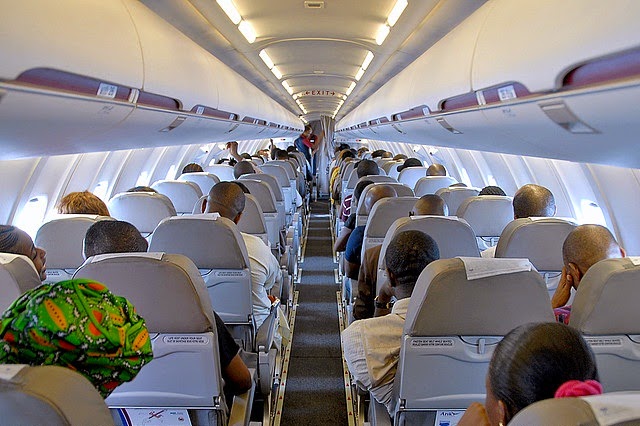By Wole Shadare
Indeed, air rage has become a global problem. Such unruly behaviour, threatening safety and security, adversely affects the travel experience of compliant passengers and disrupts operations that may result in flight delays, cancellations or diversions.
Airline personnel have, increasingly, found it necessary to deal with unruly and disruptive passengers, some of whom display violent behaviour. This behaviour can result in serious injury to staff and passengers and can compromise the safety of the aircraft. Termed ‘Air Rage’, this phenomenon enjoys regular media attention and airlines, unions and governments are attempting to tackle this issue. By many measures, the travel industry is becoming busier. Skies are congested, airports more crowded and air travel is becoming more accessible for more people.
This increased congestion at airports and on airplanes may result in a change concerning the notion of travelling by air. Those who use air travel on a regular basis may, increasingly, consider the experience mundane; infrequent or first time travellers may find it a disappointment – the relaxed, spacious and glamorous image portrayed by many airline advertisements is often at odds with that experienced by those travelling economy.
Airlines are constantly striving to attain full aircraft on busy routes, while achieving a profit in what has increasingly become a very price sensitive industry. The occurrence of air rage incidents may be, in part, attributable to the constraints under which the air travel industry operates. Air rage is a relatively new but high-profile phenomenon; such incidents being regularly reported in the press. The International Air Transport Association (IATA) suggests that air rage occurs when a passenger acts in an unruly or disruptive manner, normally at some point during the flight (IATA 2000). Therefore, while the phenomenon is termed ‘Air Rage,’ it can occur during check-in, at luggage retrieval or indeed at any point during the air travel experience.
In Nigeria, there are so many reported cases of air rage, which had led to either delay or flight cancelation where the offender is apprehended by security operatives especially when the action poses danger to flight safety. This happen most times on international flights or flights used for deportation of Nigerians abroad. No one knows how many unruly passengers cause flight diversions each year or how many are ordered to pay restitution. However, in some of the most egregious incidents, unruly passengers can face large financial restitution penalties. The fines carry a dual purpose. They help airlines recoup the cost when a flight is cut short and serve as a deterrent to others to think twice before behaving badly on a flight.
Unruly passengers have been a problem airlines have grappled with for decades. But in an era with increased focus on safety and security, tighter seating and packed planes, the airline industry feels a sense of urgency to identify potential problems and prevent incidents. The restitution penalties are federal prosecutors’ efforts to put a dent on the problem.
In a case in July 2018, a passenger Bolutife Olusegun Olorunda was ordered to pay Delta Air Lines $9,118 for the cost of a diversion to Tulsa after he verbally assaulted a flight attendant on his flight from Portland, Oregon to Atlanta. The issue of misbehavior in the air has gained greater focus in recent years, with IATA pushing for countries to adopt a global legal framework and enforcement policy for unruly passengers, since gaps in governance can mean some people are never punished for misconduct. Association of Flight Attendants union spokeswoman, Taylor Garland, said many of people took prescription drugs to feel more comfortable flying and they don’t realize the effects that alcohol or drugs can have when they’re up in the air.
If an issue with one problematic passenger isn’t tackled quickly, it could escalate into a conflict involving more people and become “a much bigger incident,” Garland said, which is why the captain may decide to divert the airplane suggests that there is an impression that violent behaviour, in general are likely to occur. An airline official, who simply gave his name as Ukachukwu, said the phenomenon was increasing in society,while there are many examples of similarly unruly, aggressive, outrageous and seemingly excessive behaviour in contemporary society. The unique environment of an aircraft in flight makes such behaviour disturbing, frightening and potentially extremely dangerous.
Should such an incident occur, neither passengers nor staff have the opportunity to remove themselves, nor is there the option of requesting immediate outside assistance.
This disruptive or unruly behaviour can take several forms, ranging from relatively minor infringements, such as arguing with fellow passengers, expressing dissatisfaction with the service or refusal to stop smoking, to more serious and abusive incidents such as the assault of fellow passengers and/or crew and damage to the aircraft. Ukachukwu highlights several problems surrounding the compilation of statistics relating to air rage incidents, such as the fact that official records have only recently been kept and sometimes a reluctance on the part of air crew to report offenders.
There has, however, been a dramatic increase in such incidents, which shows no sign of abating. There are indications that most statistics are likely to underestimate the problem.
A recent survey by the International Air Transport Association shows a five-fold increase in world-wide Air Rage incidents from 1132 incidents in 1994, to 5416 incidents in 1997 (IATA 2000). According to the United States Aviation Safety Reporting System (ASRS), unruly passenger reports have increased eight-fold to 534 in 1999 (ASRS 2000). The two major Australian airlines only began recording air rage incidents in 1998 when 30 episodes were noted, this increased to 650 recorded occurrences in 1999. The main Japanese carriers report a year on year doubling of unruly behaviour incidents to 330 in 1999. Thus, incidents of air rage are increasing and while many incidents involve young (20-35-year-old) males, often travelling in groups for leisure purposes (Calder, 2000), there are many examples of air rage incidents perpetrated by older males and females in all age groups.
It was reported recently that of a grandmother who was jailed for six months for punching a stewardess three times in the face on board a transatlantic flight from Manchester to Florida. In the absence of formal rules and international law concerning incidents of air rage, the methods of controlling such incidents varies from airline to airline, often with cabin crew having to make on the spot decisions and take immediate action.
*Shadare is an award-winning aviation journalist





